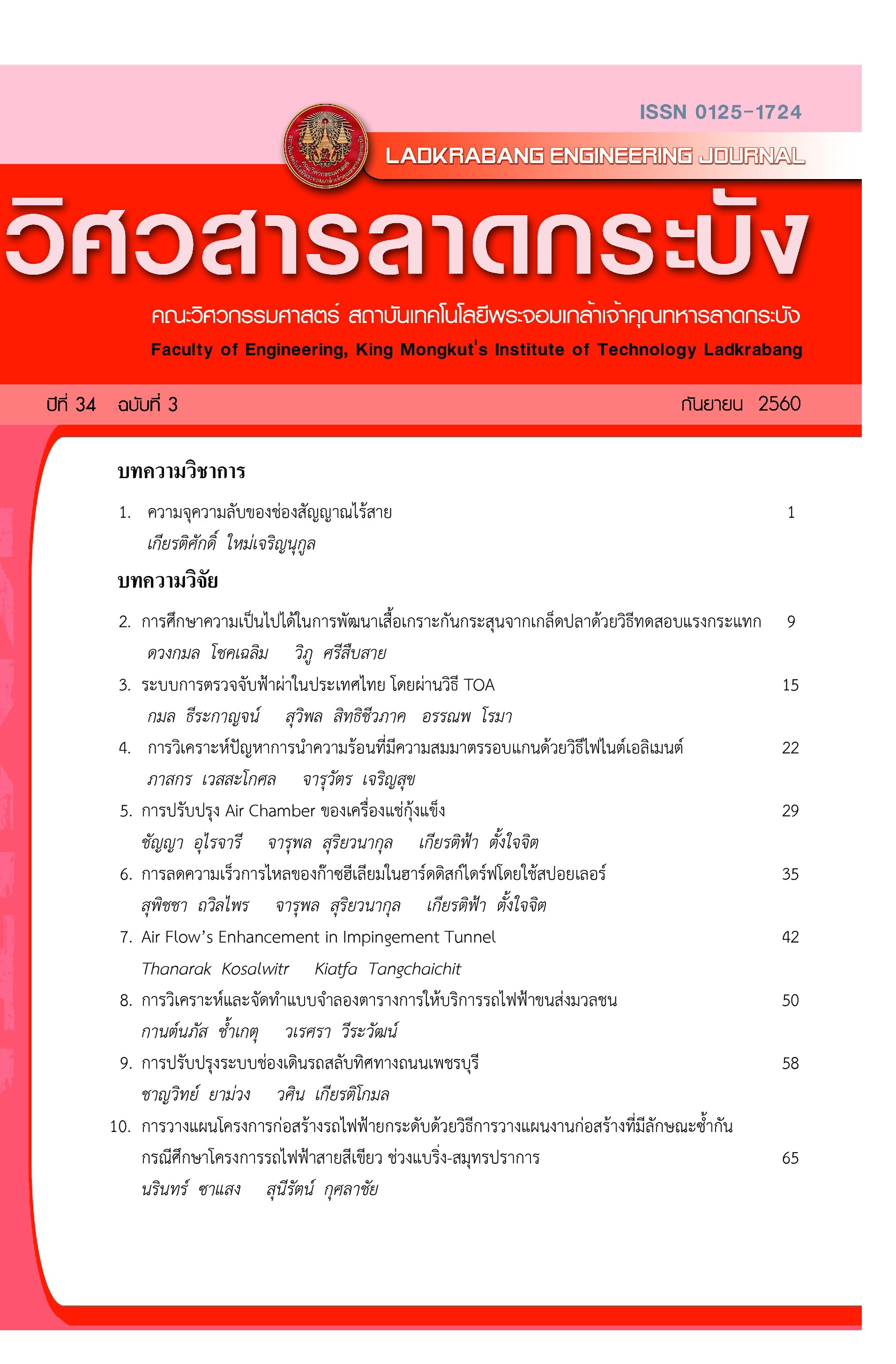Lightning Detection System in Thailand by TOA Method
Keywords:
TOA method, VLF, Lightning signalAbstract
This paper presents a lightning detection system in Thailand by TOA method. This system receives lightning signal via VLF frequency to process by TOA method. This method is used to calculate lightning locations, when the system detects lightning signal. Our system will alert via Android phone if lightning happens nearby places. User can choose locations and alert points via android application. This system will help people to know lightning location. Since lightning generally occurs in same area so that we can prevent danger from lightning immediately.
References
[2] Pranee Wongchantae, “Lightning Phenomena and Protection ,” Journal of Education and Social Development , Volume 9 , No.1 , Academic Year 2013
[3] Swati Sharma, Shoba Krishnan and Ajay Khandare, “Orthogonal Magnetic Loop Antenna for Lightning Detection”, International Journal of Application or Innovation in Engineering & Management (IJAIEM) , Special Issue for International Technological Conference-2014
[4] Miheer Mayekar , Anil Kulkarni , Bijith Marakarkandy , “Design and simulation of low frequency cloud to ground lightning receiver for severe weather monitoring application,” International Conference on Advanced Computing Technologies and Applications (ICACTA-2015)
[5] Hans D. Betz, Kersten Schmidt and Wolf P. Oettinger ,”Lightning: Principles, Instrument and Application,” Chapter 5 : LINET – An International VLF/LF Lightning Detection Network in Europe , 2009
Downloads
Published
How to Cite
Issue
Section
License
The published articles are copyrighted by the School of Engineering, King Mongkut's Institute of Technology Ladkrabang.
The statements contained in each article in this academic journal are the personal opinions of each author and are not related to King Mongkut's Institute of Technology Ladkrabang and other faculty members in the institute.
Responsibility for all elements of each article belongs to each author; If there are any mistakes, each author is solely responsible for his own articles.






